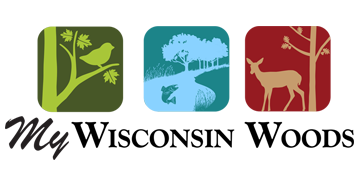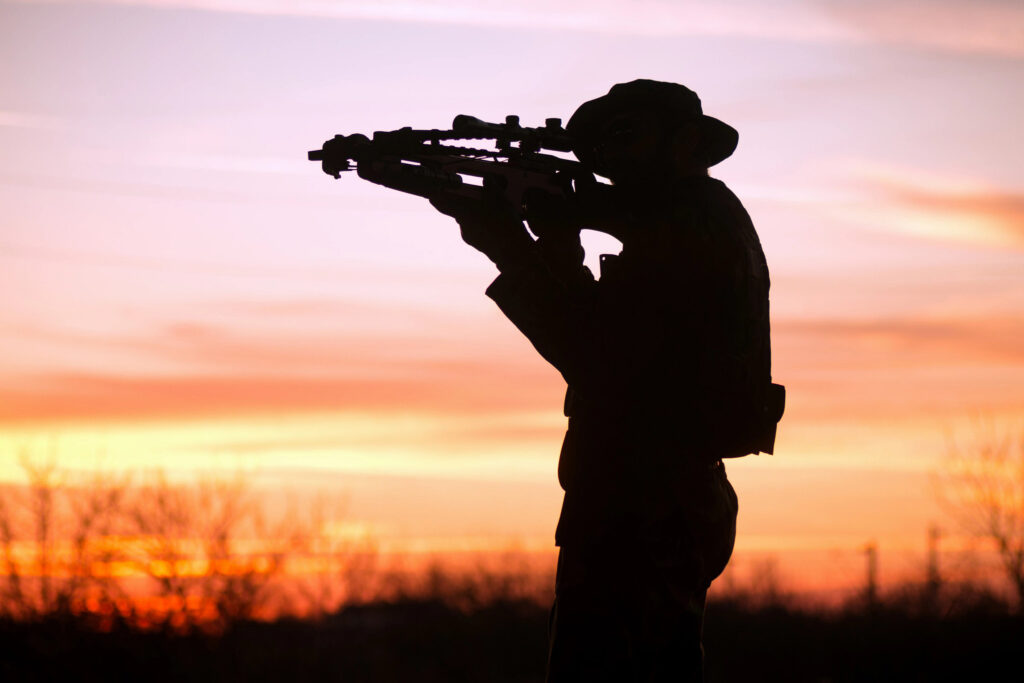
Bow Hunting in Wisconsin: The Basics
Last year, over 50 percent of Wisconsin’s 600,000 deer hunters used some form of bow and arrow. Bow hunting offers many advantages and challenges for those who want to expand their hunting experience.
By Denise Thornton
“It’s a longer season,” says Ashley Van Egtern, Wisconsin DNR Hunter Education Program Specialist. “The 9-day gun deer season is usually cold and snowy, but deer bow season starts mid-September and goes to January. It allows you to try hunting in all weather and closer the actual rut as well.”
Like many people, Emily Lehl, Wisconsin DNR Hunting & Shooting Sports Program Specialist, learned to gun hunt before she learned to bow hunt. “A lot of our learn-to-hunt classes start with rifles,” Lehl says. “Gun hunting can have a longer range. In Wisconsin you don’t usually need to shoot a deer beyond 50 yards because most people hunt in the woods, but there are places in the state where you may have a 200-yard shoot across a field. Some people are experienced enough to make those shots with a gun and do it well.”
With a bow, you need to be much closer the deer — typically within 25 yards, according to Lehl. “I think the experiences that I have had bow hunting have been more intimate, and I’ve been able to observe actual deer behavior more than I do with a gun.”
Richard Kirchmeyer, President of the Wisconsin Bowhunters Association, who has hunted most types of game with bow and arrow, agrees. “There are so many things to enjoy: listening to the birds, seeing a bobcat and other wildlife. As an archer, you are making the least amount of noise, and you can enjoy the outdoors more.”
Of course, there are cons as well as pros to bow hunting. According to the website Outdoors First :
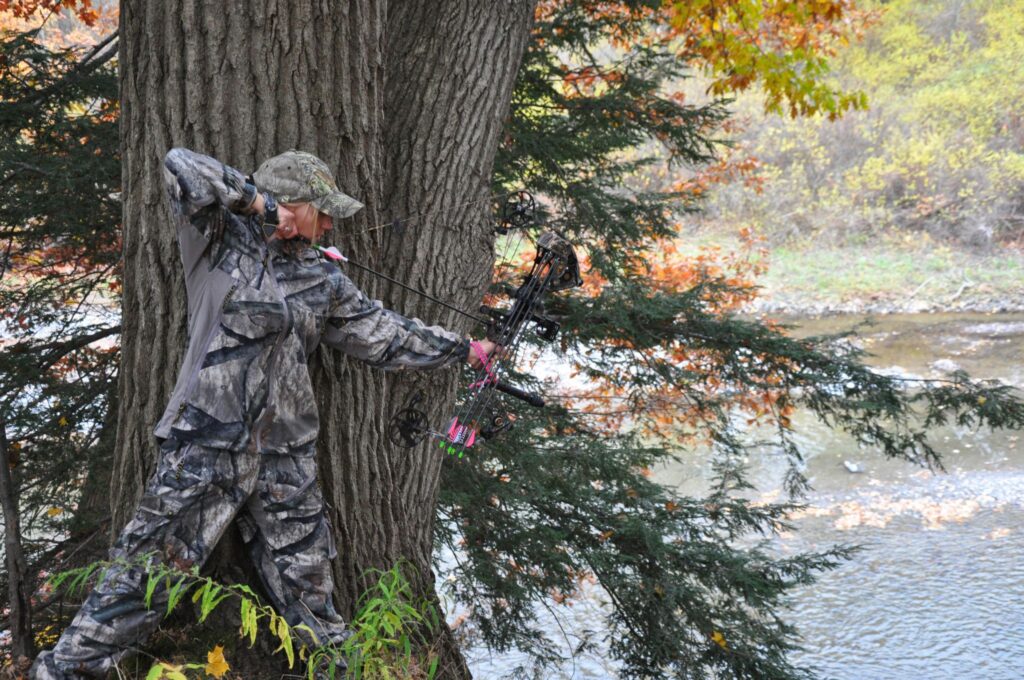
- You must get much closer to your target without spooking it.
- Tiny branches can knock your arrow off course.
- Shot placement is even more critical.
- Not everyone can pull a bow back.
Lehl says, “The process after the shot is different too. If you shoot a deer with a gun, there is quite a bit of bruising around the shot, and the impact does more damage so the deer expires more quickly. Typically, you can watch the deer run and then lay down within five to 20 minutes.
“Because there is less power behind the arrow, with a bow you need to be more practiced so you can make sure your shots are ethical. There is less impact trauma with archery equipment and collapse from blood loss tends to be a little slower. You typically need to wait an hour to two hours before you start tracking. Deer have amazing powers of self-preservation, and if they feel like they are being followed, even if they are mortally wounded, they can go for a long time. However, if they feel somewhat safe, they will tend to lie down which makes recovery easier.”
Shelle and Brandon Wade have been hunting together for many years and mentor new hunters in Monroe County. “First and foremost,” says Shelle Wade, any hunt is an exercise in mental fortitude and the understanding that this is not a go out and expect success every time. For me, bow hunting is more peaceful. Having to get as close as you need to be to be successful gives you a different perspective. You appreciate it more because of how much more difficult it is to harvest an animal and getting that close to a wild animal creates a special experience as a hunter.”
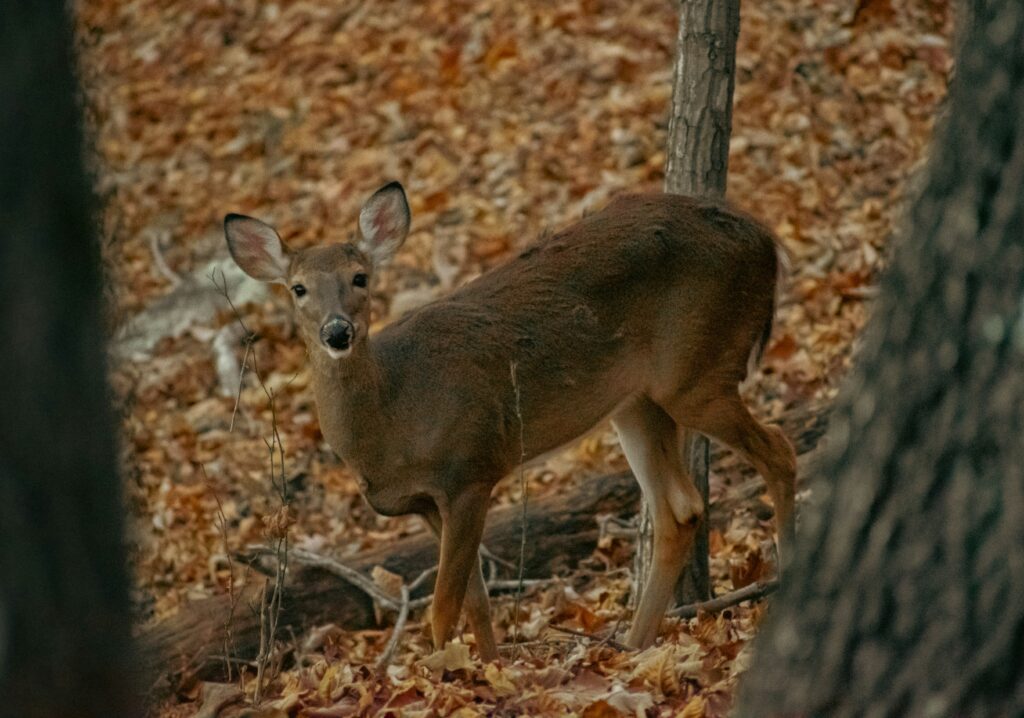
There are several ways to learn how to bow hunt. In Wisconsin, you need to take a hunters safety class to buy a hunting license, if you want to hunt independently. While many western states require a specific archer certification, there is no separate certification in this state.
“We have limited in-person bow hunting classes. We are always looking for instructors. We also have an online bow-hunting course that anyone can take,” says Van Egtern. The course is presented by the National Bow Hunter Education Foundation (NBEF). They work closely with the International Hunter Education Association, which sets the standards for education in all 50 states, so certificates have reciprocity with all other states.
A new hunter can also obtain a mentored-only hunting license and hunt without first completing a hunter education course. To do so they must be accompanied by a licensed hunter, and hunt within arm’s reach of their mentor.
Other courses that are valuable to bow hunters include a tree stand safety course and a deer processing course. Deer processing workshops started two years ago. “They have been really popular,” says Lehl. “We are looking for professionals and experienced home processors to volunteer to lead these workshops. A lot of people who might be hunting deer for management purposes may take a lot of deer of the landscape, and processing costs can get high. It can be helpful to do it yourself.”
Wisconsin also has a venison donation program where hunters can donate the entire deer free of charge, and retain the head and/or antlers for mounting if desired.
When considering taking up bow hunting, there are two types of bows from which to choose. For those familiar with gun hunting, according to Lehl, “crossbow hunting is a pretty easy jump. A lot of crossbows now can have a scope put on them, so if sighted in properly, you have the crosshairs as an additional aid.”
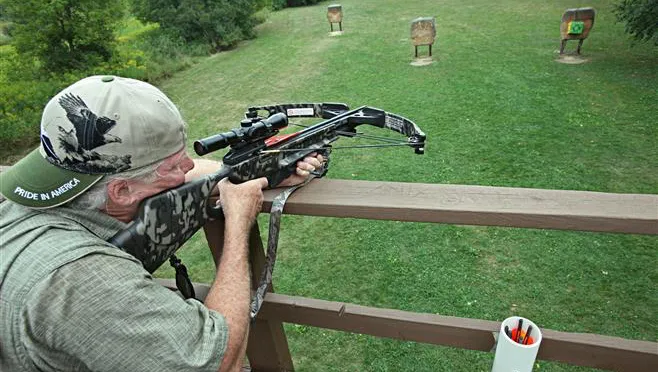
For the most up-to-date information on which type of bow to choose and how to use it, Lehl suggests that the local archery shop is a great resource. “We have some amazing shops in Wisconsin,” says Shelle Wade, “These guys live and breathe archery, and they are also hunters.”
“An archery shop will have all the expertise to get you started,” adds Lehl. “When I bought my compound bow, I walked in there, told them I knew nothing, and they showed me the options. Crossbows are typically a bit more expensive but may have less of a learning curve. When I chose a compound bow, they made sure I got one that fit me. They customized it to my height and draw length. Then they helped me pick arrows and cut them to the right size. They helped me to get my bow sighted in. They recommended that you want to start shooting in July at a minimum if you want to bow hunt in September.”
“If you purchase a bow, you will notice quickly those are not muscles we use every day when you draw a bow back,” says Shelle Wade. “Anything you can do to optimize your practice, work out your shoulder muscles, deltoids, and your core is good. You could potentially be drawing your bow and holding it back for two minutes. The more you practice — the better. With bow hunting, you don’t want to put your bow down for long. We picked our bows up in March. There are many archery shops where you can shoot all winter long in leagues to keep you fresh.”
“You want to be very confident in your shot. You want a routine that is repeatable and in your muscle memory. You need to get accurate hitting a softball-size target at 25 to 30 yards,” Lehl adds. “When you first start shooting with a compound bow, you start at 10 yards, and when you are good at that, you can extend out to 15 and then 25 yards. You can be accurate target shooting to 50 yards, but you don’t want to do that while you are hunting because things can happen. Arrows are a lot slower than bullets. When you pull the trigger of a rifle, the hit is almost instantaneous to a target 50 to 100 yards, but an arrow is much slower, and the deer could take a step, which would put your shot off. You would hit farther back, instead of in the vital area.”
“I have hunted with crossbow the last five years because of their effectiveness,” says Brandon Wade. “I did not have the time to put in for adequate practice with a regular compound bow, and as a hunter you want to make the most lethal, ethical bow shot that you can. This year, we drew Montana elk tags, and Shelle and I have shot our compound bows almost every day.”
